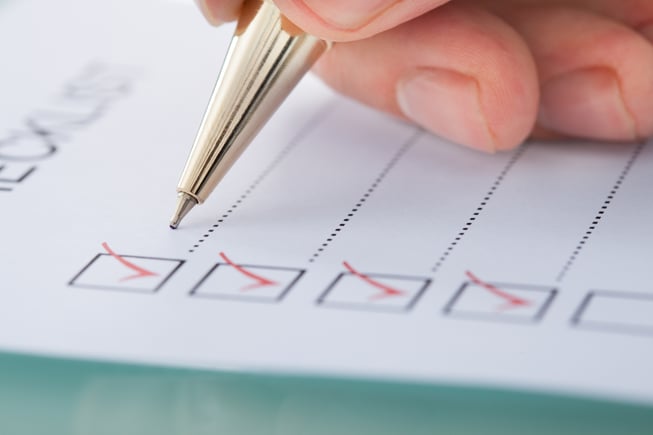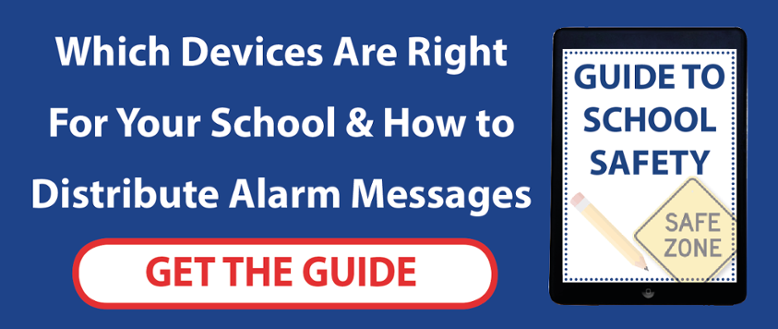
Health and safety in schools require a sensible and realistic approach to ensure a healthy and safe environment within the premises for everyone that uses them, including pupils, visitors and the school workforce.
Risk assessments provide a method of identifying and reducing risks and increasing safety within the classroom, however, they can be laborious and may not be relevant for every classroom activity. A classroom safety checklist is not mandatory; however, it is a useful and speedy tool that can help schools to comply with safety legislation and ensure pupils and staff are safe.
A Quick Tool for Classroom Staff
Classroom safety is usually covered in school-wide measures that are in place to deal with risks. Teachers and support staff do not need to complete an individual written safety assessment for their regular classroom. However, the classroom safety checklist can help them rapidly ensure their classroom meets minimum health and safety standards. Whilst the tool is not mandatory, it can help to identify areas of need, and can provide a useful resource for the school management team when they review and update their school-wide risk assessments. The checklist can help staff members to raise any concerns about health or safety in the classroom. Employers have a responsibility under health and safety law to provide a safe working environment, and the checklist can help to identify areas of serious concern and ensure that school safety guidelines are being met.
The Checklist
The checklist is designed to cover the most common areas of concern and risk in an ordinary classroom. It is not intended to cover sports facilities, drama rooms or specialist areas within the school such as science laboratories, art rooms, design and technology areas or pupil referral or isolation rooms.
It has no legal basis as a document and can be used by anyone who uses the classroom for work, including teachers, teaching assistants, department heads or other staff that may utilise the classroom. The checklist can be used as and when necessary. For example, it can be completed at the start of each term or school year to provide the management team with details of any changes and allow them to plan how to combat any areas highlighted. It provides reassurance to teaching and support staff that their area of work is safe and that the most common risks are being adequately controlled.
Common Risks
Common risks within the classroom can vary, as can the changes needed to ensure each classroom meets school safety guidelines. Although the checklist is not an exhaustive list, it provides an easy to use tool to identify the most common risks.
Some of the common risks that may be identified within the classroom includes;
- Flooring checks. Is the flooring in good condition? Does it have trip, slip or fall hazards? Are procedures in place to deal with spillages?
- Lighting. Is lighting bright enough to allow safe access and exit? Is the lighting suitable for learning and teaching?
- Electrical Cables. Are there trailing cables or wires? Are the wires in good, safe condition? Are they out of reach or hidden as far as possible?
- Working at height. Is there a stepping stool available for use when needed? Is a window opener available for opening higher windows?
- Furniture. Is the furniture in a good state of repair? Is the size of the furniture suited to the size of the user? Are radiators and pipes covered to reduce the risk of contact burns? Are large items such as bookcases and shelves securely fastened to avoid the risk of them falling?
- Manual handling. Do classrooms have trolleys or other suitable items for moving heavy items?
- Work space. If you use a computer within the classroom, has a workstation assessment been completed? Are pupils aware of good practice when using computers? Have internet safety measures been implemented to avoid pupils accessing inappropriate material online?
- Electrical equipment. Are plugs and sockets in a good state of repair? Has electrical equipment been tested at necessary intervals to ensure they are safe to use? Do electrical items have stickers with their test date and future test date? Has damaged electrical equipment been removed from use and taken for repair or replacement?
- Asbestos. Older schools may still contain asbestos. The details of the location and the condition of the asbestos should have been recorded and reported to you. Guidance should be provided to teachers to ensure they have information on securing work to ceilings or walls that may contain asbestos.
- Fire. If the classroom has fire doors, they should be unobstructed, kept unlocked, and easy to open from the inside. Is firefighting equipment available in the classroom? Has it been checked? Fire evacuation procedures should be clearly displayed. Teachers and teaching assistants should be aware of the evacuation drill, including arrangements for vulnerable adults or children.
- Ventilation and heating. The classroom should have methods of natural ventilation. Teachers and pupils can expect a reasonable room temperature which can be maintained during teaching hours. Measures should be in place to protect the classroom from the effects of the sun, for example, blinds to protect from glare and heat.
Using the Checklist When Meeting School Safety Guidelines
The school management team can collate the classroom checklists and identify areas within individual classrooms that require work to meet safety guidelines. It is the law that all employees are provided with a workplace that meets the minimum health and safety guidelines as set out by the Health and Safety Executive. The checklists are designed to help ensure areas of teaching within the school meet these guidelines and that staff members are working in a safe and healthy environment.





